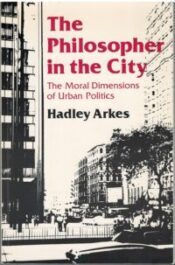
Thoughts on Federalist No. 28
It is interesting to look at the Federalists through the lens of history. Hamilton, Madison and Jay were frequently spot on with their observations and predictions. Some of Hamilton’s arguments are a little hard to follow in their logic, but in spite of his occasional rhetorical license, he was right more often than not.
At the beginning of Federalist No. 28, Hamilton lays the groundwork for this essay, by positing that all societies, regardless of how they are constituted, will at some time suffer civil unrest.
THAT there may happen cases in which the national government may be necessitated to resort to force, cannot be denied. Our own experience has corroborated the lessons taught by the examples of other nations; that emergencies of this sort will sometimes arise in all societies, however constituted; that seditions and insurrections are, unhappily, maladies as inseparable from the body politic as tumors and eruptions from the natural body; that the idea of governing at all times by the simple force of law (which we have been told is the only admissible principle of republican government), has no place but in the reveries of those political doctors whose sagacity disdains the admonitions of experimental instruction.
Hamilton has been proven right by history. America certainly has experienced its share of periodic civil unrest, almost from the first. Under the Articles of Confederation, Daniel Shays and Job Shattuck Massachusetts were leaders of a rebellion that bore the former’s name. The country was suffering an economic depression in the aftermath of the Revolutionary War, credit was tight and the country’s finances were a mess. Massachusetts was desperate for funds and stepped up efforts to recoup back taxes – taxes that the people couldn’t pay. In response, protests in rural Massachusetts turned into direct action, preventing courts from opening and organizing against the government. Although the rebellion was subdued before the Constitutional Convention in Philadelphia, it was seen as a symptom of the weak government under the Articles and impacted how the new government would be framed. Several of the Federalist Papers refer to this, including No. 28.
The problems of civil society didn’t just go away after ratification. Even the presidency of George Washington was marred by rebellion, when farmers used violence against revenue agents trying to collect a tax which fell disproportionately upon those who sold their grain in the form of whiskey. This rebellion fulfilled Hamilton’s predictions and proved that the new government was willing to use force to suppress violent resistance to its laws. The public largely approved of Washington’s suppression of the rebellion.
Time and time again the government has demonstrated its willingness to use force to protect its interests. Hamilton felt that this force was better held by the Federal government than by the States alone.
It may safely be received as an axiom in our political system, that the State governments will, in all possible contingencies, afford complete security against invasions of the public liberty by the national authority.
He argued that the power of the federal government would be tempered by the State governments and that having both systems prevented usurpation by either. Today we have states like Arizona, which are advocating for their citizens against federal power in a number of areas, notably immigration and Obama Care. It remains to be seen how effective the balance is now. One thing is certain. the federal government will use force to look after its interests if it thinks it necessary.
 The posts are coming!
The posts are coming!

1 comment
State and Federal power have been completely consolidated. That’s evidenced in the 17th Amendment, the Dept. of Ed., the Bureau of Land Management and on and on and on. Hamilton was wrong. Why? Because he was against Federalism anyway, he certainly wasn’t going to stack the deck against himself in his argumentd.
[Reply]
Leave a Comment